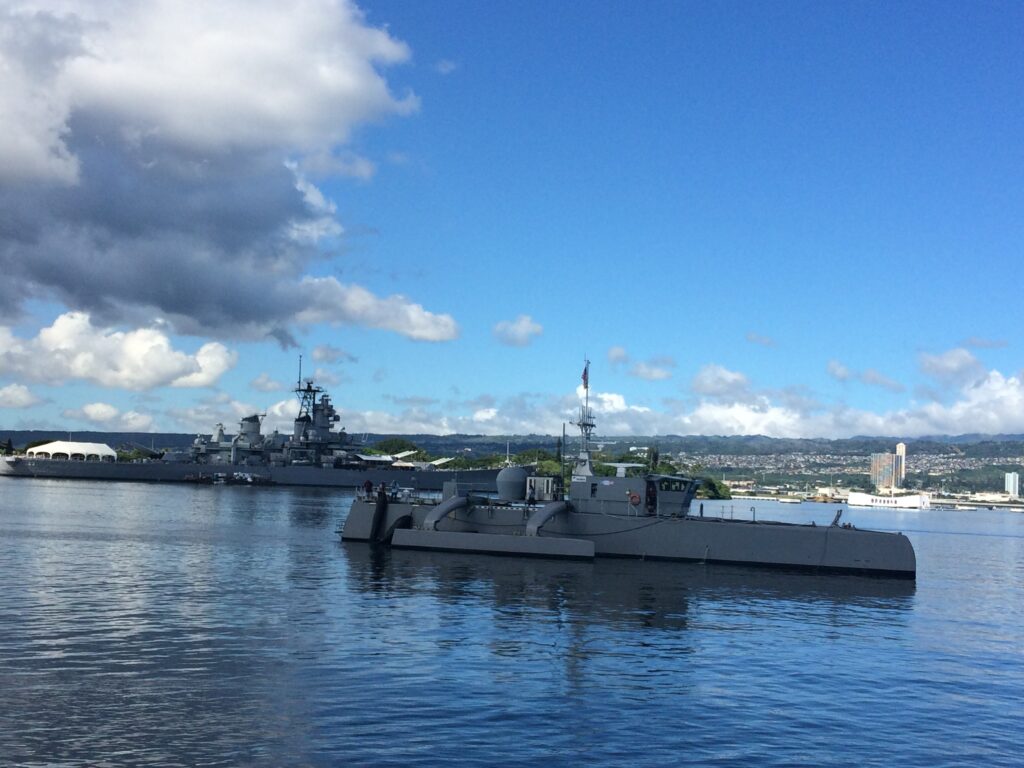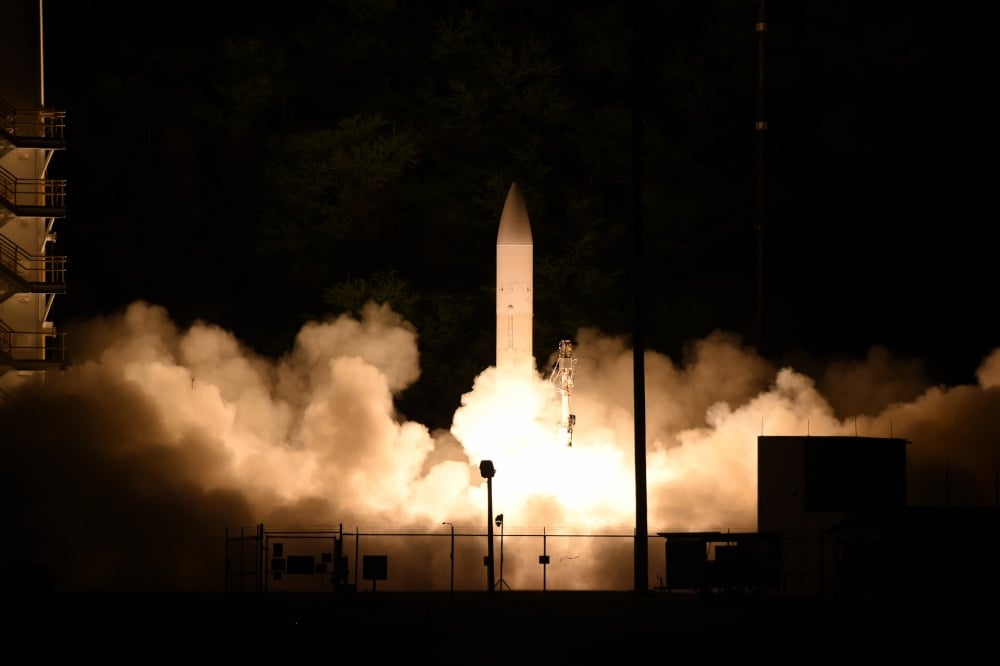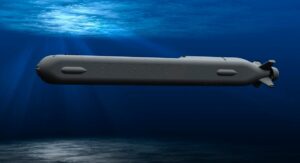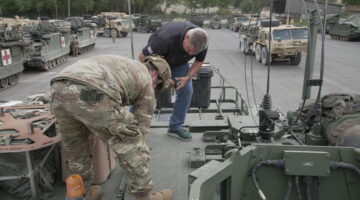
WASHINGTON: The Senate Armed Services Committee’s draft of the annual defense policy bill would slash more than $100 million from hypersonic missile R&D — half of that from the Navy program — and over $430 million from prototypes of unmanned ships and submarines. Meanwhile, according to our analysis of 70 pages of detailed funding tables, more traditional weapons systems like manned ships and aircraft would get major increases.

The F-35 Joint Strike Fighter program would get an additional $1.36 billion, scattered across multiple accounts: $977 million for more Air Force F-35As; $125 million for Marine Corps F-35Bs; $200 million for Navy F-35Cs; and $60 million for the extra spare parts these added aircraft will require. (Of course, only appropriators can actually approve new money.)
Navy shipbuilding would grow by $1.35 billion, including:
- $175 million for advanced procurement of the new Columbia-class nuclear missile submarine, justified as ensuring the stability of the supplier base;
- $472 million for advanced procurement of a future Virginia-class attack submarine in addition to those requested by the Trump Administration (but there’s by a $74.4 million cut to the Virginias currently under construction on grounds of “unjustified cost growth”);
- $435 million for advanced procurement of future Arleigh Burke destroyers (but there’s a $30 million cut to the current ships); and
- $500 million for amphibious ships, split between the mid-size LPD class and the larger LHA-9.
- Lower-profile Shipbuilding & Conversion line items like landing craft and outfitting suffer a net cut of $126 million (which is what keeps the total to $1.35 billion).
The Missile Defense Agency would get the eighth Army THAAD battery it requested, a $349.4 million increase: $243 million for the high-tech AN/TPY-2 radar, $30.1 million for HEMTT trucks, and $76.3 million for other components.
Now, this assumes SASC’s figures are approved, a multi-month process whose outcome is far from guaranteed. The House Armed Services Committee won’t release its funding tables until next week, and even once HASC and SASC have reconciled their differences in conference, the powerful appropriations committees are the only bodies who can actually approve new spending. So at this stage, the specific numbers are less significant than the signal they send, both to the Pentagon and to other committees in Congress.

Hypersonics
The US is racing to catch up with China and Russia on hypersonic weapons, which can defeat traditional defenses by being faster than cruise missiles and more maneuverable than ballistic ones. Congress is generally supportive: the SASC draft (Sec. 219) declares “It is the sense of Congress that development of hypersonic capabilities is a key element of the National Defense Strategy.”
But legislators are still leery of the risk and redundancy that often lurks in high-stakes programs. Yes, the armed services are striving to coordinate their separate hypersonic programs. The Army and Navy missiles, in particular, will be largely identical. But SASC’s funding tables still dock them repeatedly for “Lack of hypersonic prototyping coordination”:
- Defense-wide Advanced Component Development & Prototyping for hypersonics loses $20 million.
- Defense-wide Advanced Technology Development (the stage of R&D that precedes prototyping) also loses $20 million.
- The Army’s Long-Range Hypersonic Weapon (LRHW) prototype loses $5 million.
- The Navy’s Conventional Prompt Strike (CPS) prototype loses $5 million for “lack of … coordination” and another $52 million for what SASC deemed “excess” spending to modify the Virginia-class attack submarine to launch the CPS missile.
Now, these cuts are very modest relative to the size of the programs: The Navy’s still getting just over $1 billion for CPS, the Army $796.4 million for LRHW. The DoD-wide total is close to $2.9 billion.
In short, the senators are doing their jobs of overseeing how the Pentagon spend taxpayers dollars. But they make clear that the Pentagon needs to address the committee’s concerns to avoid a bigger hit in the future.
Interestingly, the only service developing multiple hypersonic weapons at the same time — the Air Force — is the one whose hypersonics budget comes through unscathed. To the contrary, the Hypersonic Air-Breathing Weapons Concept (HAWC) gets a $65 million increase. The SASC draft also says the undersecretary of Defense for research & engineering, “in consultation with the Chief of Staff of the Air Force,” provide Congress “an executable strategy and plan to field air-launched and air-breathing hypersonic weapons capability” within three years. That’s the category of hypersonic weapons to which HAWC belongs, and it’s the hardest to develop. “Air-breathing” engines, i.e. jets, have a harder time at hypersonic weapons than rockets, and weapons fired from aircraft must be much more compact than ones launched by trucks, ships, or submarines.
There’s no mention of the Air Force’s other missile, HSW-ab, or the service’s third hypersonic weapon, the rocket-propelled ARRW. That suggests their funding would stay steady.

Robot Ships & Submarines
Congress and the Pentagon are deeply at odds over the future of the fleet. The Navy, backed by Defense Secretary Mark Esper, sees robotic vessels as crucial adjuncts to larger manned warships, with unmanned surface and underwater vehicles (USVs and UUVs) serving as relatively expendable scouts, decoys, and missile launchers. Congress, however, remains deeply committed to traditional shipyards and President Trump’s campaign promise of 355 (manned) ships. There’s fear on Capitol Hill. that the Navy may be moving too fast towards full-up prototypes before working out technical basics, like how to keep ships running with no maintenance crew aboard and how to retain human control of lethal weapons from a long way away.
Both the House and Senate Armed Services Committees have passed language limiting the robo-boat programs. SASC forbids the Navy from spending 2021 appropriations on the Medium USV, Large USV, Large Displacement UUV, or Extra-Large UUV until it can show their “‘critical mission, hull, mechanical, and electrical sub-systems’’ will work well. The HASC language specifically says the LUSV must function 30 days without human maintainers; SASC sets a 45-day (1,080-hour) threshold for both LUSV and MUSV.
We haven’t seen HASC’s funding tables yet, so we don’t know if the House committee wants to cut these programs. But the Senate funding tables cut them by over $548 million (and authorizers do have the power to limit spending):
- Prototyping for Medium and Large USVs is cut entirely, with SASC rejecting the entire $464 million request as “excess procurement ahead of satisfactory testing.”
- Prototyping for Large Unmanned Undersea Vehicles is cut nearly in half, losing $36 million out of a $78 million request, again as “excess procurement ahead of…. testing.”
- Prototyping specifically for the XLUUV (aka the Boeing Orca) and the LDUUV (aka Snakehead) are each cut $10 million (out of an unspecified total) for having an “uncertified test strategy.”
- Even the relatively small and modest Barracuda mine-hunting UUV prototype is cut $28 million for an unspecified “program delay.”
On the upside, SASC would add $115 million for “advanced surface machinery” to help unmanned surface vessels operate without human maintainers: $45 million for “USV autonomy” and $70 million for “engine and generator qualification testing.” That partially offsets the cuts above – but in a way that makes it very clear the Senate wants the Navy to get the basics right before putting prototypes to sea.

